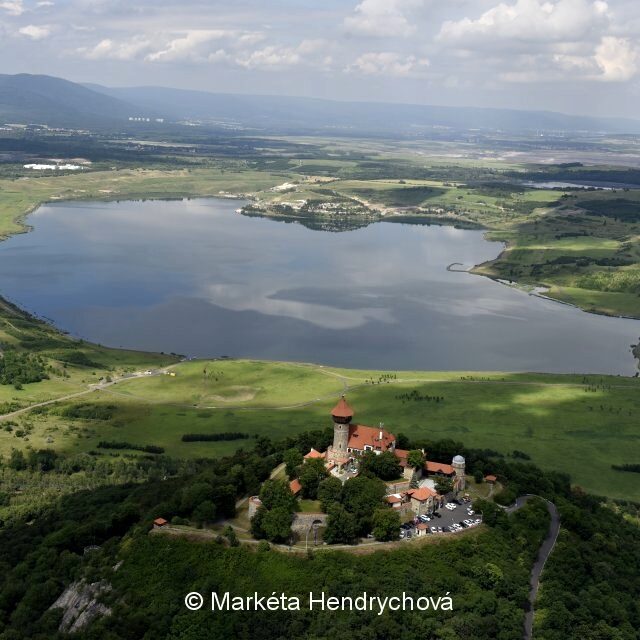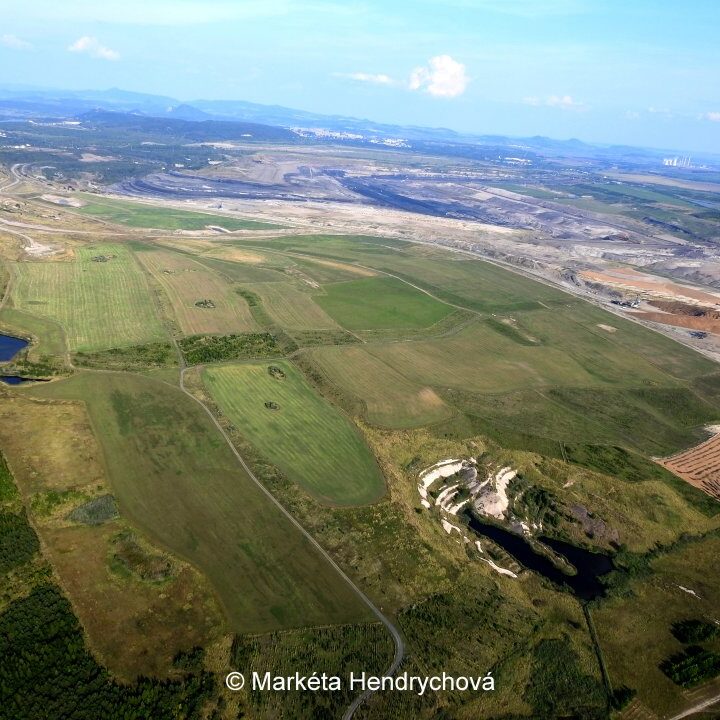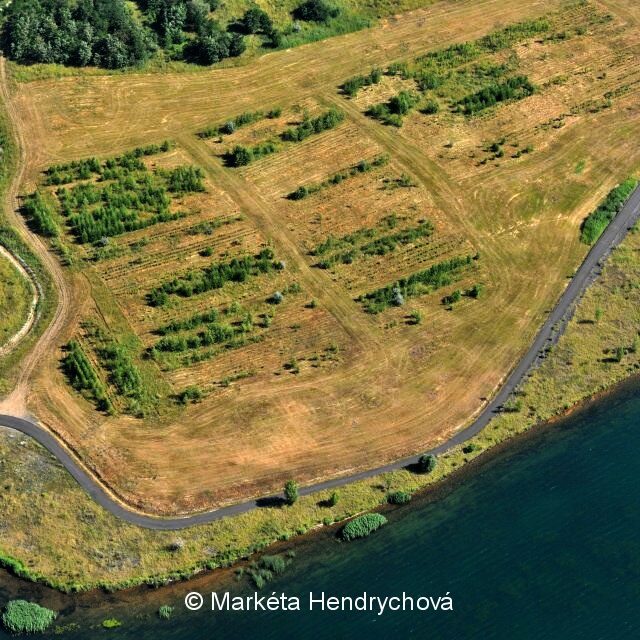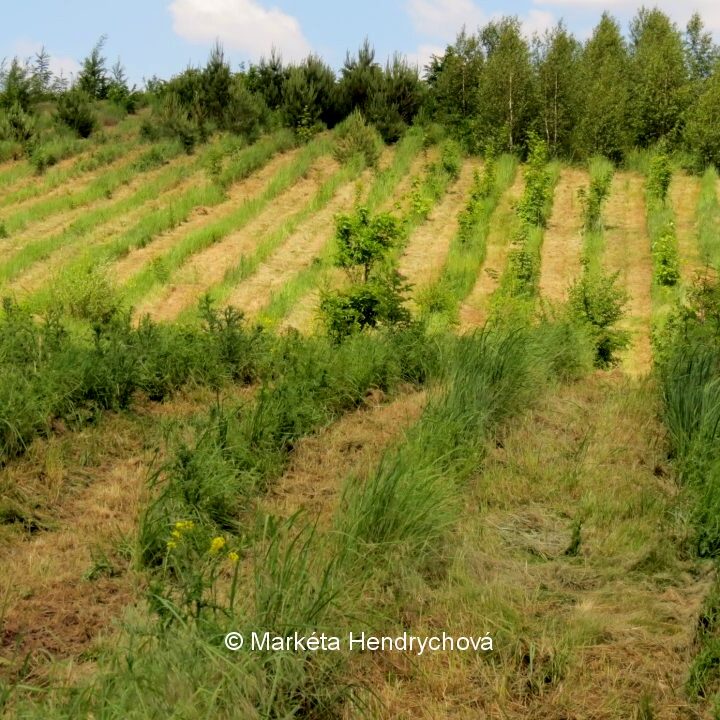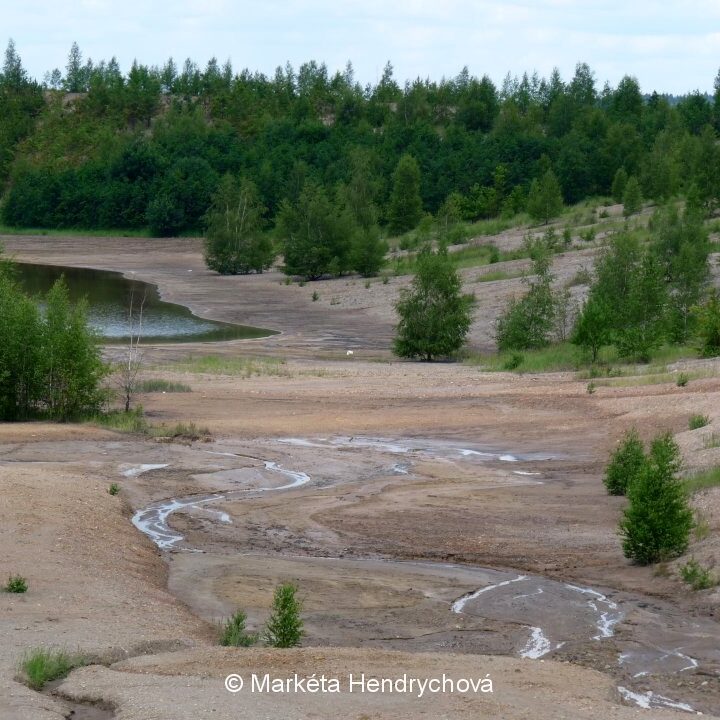1. Czech lignite reserves and share in the power system
In the North Bohemia, the focus will be on two mining districts – Sokolov and Most basins, which include the majority of lignite deposits. In the Czech Republic, there are 55 known deposits of lignite out of which nine are mined, most of them ore of Miocene age. The total known geological reserves of lignite are 9 055 mil. tons. Not all of that coal is however technically mineable and mining of part of the mineable resources is banned by limits set by government decision no 444 from 1991. Consequently, total mineable reserve in this region are 783.8 mil tons.
The majority of these reserves occur in Most district (654.8 mil tons) and smaller part in Sokolovsky district (129.0 mil tons). Share of individual companies and mines are as follows in millions of tons: Sev.-energetická, a.s. company mine ČSA 27.7 and mine Centrum 3.8 Vršanská uhelná, a.s.company mines Vršany Jan Šverma 277.0, Severočeské doly, a.s. company mine Libouš 210.1, and mine Bílina 136.2 and Sokolovská uhelná, a.s. company 129.0. the heat capacity of the coal varies from 10-11MJ kg-1 in most region to 12-13 MJ kg-1 in some parts of Sokolov region. Except of one mine, opencast surface mining does all mining. In 2014, 38.18 million tons of lignite were harvested and sold out of which, 98,2% was sold in national marked and 1.8% was exported.
Brown coal is major source of energy. In 2005 lignite generated 43.1 TWh of electricity, which represented 52.2% of the total btto electricity production of 82.6 TWh. In 2013, lignite produced 35.9 TWh, which in total with electricity production of 87.1 TWh at 41.2%. For eight years, the total electricity production increased by 4.5 TWh, lignite electricity production decreased by 7.2 TWh, the average annual decrease electricity production from lignite was 0.9 TWh (2.1%). The production of lignite electricity has been displaced mainly by growing production in nuclear power plants and renewable energy sources. In 2005, lignite was centrally produced and supplied with 58 PJ heat, of which the total output was 139.2 PJ accounted for 41.6%. In 2013, central heat production declined to 122.2 PJ and lignite was down produced and delivered 53.4 PJ. In eight years the total heat production decreased by 18 PJ. Heat production of lignite fell by 4.5 PJ, but the share of lignite in total heat production increased from 41.6% to 44.1%.
Lignite is mainly used for the production of electricity and heat in a wide range of power plants when particularly large energy companies with a consumption above 50 MWt are of decisive importance. These are, in total 47. The most important heat and energy producer is semi-governmental Czech energetic company CEZ’ (four heating plants and nine power plants). Among the biggest we can name Prunéřov II 1050 MW lignite consumption 2 442,0thousand t y-1 , Počerady, a.s. 1000 MW using 5 417 thousand t lignite y-1, and Tušimice II800 MW, with 4 577,0 thousand t y-1.
2. Geographical and population characteristics of NB
The study area is located in Severozápad (Northwest) Oblast, which is a statistical area of the Nomenclature of Territorial Units for Statistics, level NUTS 2. It includes the Karlovy Vary Region and Ústí Region (NUTS 3 level structures).
The Ústí Region is located in the Northwest of the Czech Republic on the border with the German Land of Saxony. The border with Germany is made up of the Ore Mountains, in the interior there is the Central Bohemian Mountains, the rest of the region is predominantly flat. By the end of 2016, the Ústí Region had 821,337 inhabitants, making it fifth in the Czech Republic. Population density (154 inhabitants / km2) is higher than the national average. The characteristic feature of the region is a relatively young population, the average age is 41.6 years. The Ústí nad Labem Region is ranked fourth in the number of live births per 1000 inhabitants (10.0), but there is the highest mortality rate in the Czech Republic (11.0 per 1 000 inhabitants).
The Usti region is traditionally an industrial area with a strong orientation of the economy to the heavy industry. Historically, the region specializes in mining, especially brown coal. Other industries (e.g. engineering, energy) are linked to these sectors. After the German population was relocated after the Second World War, the area of the region was resettled by the population from other territories of then Czechoslovakia, which represented a significant labor force of workers’ professions that could be used for the developing heavy industry. For this reason, there is a high concentration of population in the pelvic region and this area is one of the most urbanized areas of the Czech Republic. A number of industries (chemistry, textiles and clothing, mechanical engineering, mining, power engineering) underwent a dampening in the 1990s.
As a result of the decline of the mentioned industries, there are many unused industrial facilities in the Ústí Region. Industrial activity from the past has had and still has a negative impact on the quality of the environment. Strongly developed surface mining has greatly damaged the natural face of the landscape, which is gradually being restored with very expensive reclamation. Problems with the emission situation in the region are also well known. There has been a significant improvement in the last decade, which can be documented by decreasing emissions, but the region is still perceived as the area with the most damaged environment. The country’s infallible primacy lies in the specific emissions (t/ km2) of sulfur dioxide and nitrogen oxides.
The Karlovy Vary Region is located in the westernmost part of the Czech Republic, adjacentto the Plzeň and Ústecký Regions, as well as Bavaria and Saxony. The relief of the region ischaracteristic of the lowlands of the Pelhřimov region, where the headquarters of the region are situated – Karlovy Vary, Sokolov and Cheb, where the population and economic activity are concentrated. Karlovy Vary region is famous for its spa.
The population and the structure of the region’s settlement are still bearing signs of significant changes after 1945. The displacement of the German population and the subsequent resettlement especially for the needs of the heavy industry changed considerably the population of the region – the municipalities in the peripheral parts of the region were either extinct or marginalized, areas. Specific labor requirements resulting from decades of artificially supported industrial specialization have had and have implications for the socio-professional structure and education of the population. At the same time, environmental impacts are evident, although in the long run it is improving and in some respects is among the best in the Czech Republic, there are still many local environmental burdens and brownfields in the region.
3. Economic activities and employment
A common problem of the Karlovy Vary and Ústí regions is the low rate of economic growth and the lag behind other regions of the Czech Republic. Typical is low attractiveness of the regions for the life of the population, a smaller offer of prospective job and career prospects not only for young and qualified professionals (negatively affecting the inhabitants of the region as well as the attraction of people from outside the region) and worse conditions and low attractiveness for business. An important factor of insufficient quality of workforce is the high concentration of socially disadvantaged groups in the Ústí region and a large number of socially excluded localities, which are associated with a relatively high incidence of socio- pathological phenomena and a high level of unemployment.
In 2016, the Ústí region contributed 5.7% to the gross domestic product in the Czech Republic. In terms of per capita, it reaches 73.8% of the national average, and is among the regions at thirteenth position. The most important employers of the Ústí Region include two mining companies (Czech Coal and Severočeské doly) and chemical plants.
A substantial part of the region’s economy is built on a smaller number of large companies. Also, due to the above reasons, the region faces other socio-economic problems that are characteristic of economic transformation, such as high unemployment, declining property prices, inappropriate educational structure, and underdeveloped civil society. In the region there is a very low share of the university educated population. The decline in coal mining, the restructuring of enterprises, the decline in production and agriculture, mean that the highest proportion of unemployed people in the Ústí nad Labem Region (7.79% in the Czech Republic was 5.19% at 31.12.2016). The share of the unemployed, i.e. the number of achievable job seekers aged 15-64 years, was equal to 5.45% for the same age group in the Karlovy Vary Region.
The economy of the Karlovy Vary Region is also specialized in mining and power engineering. In the region there is significant mining capacity for brown coal mining, but its reserves are gradually diminishing and the mining industry in the region will therefore be forced to terminate its activity in the period of about 10-15 years. In particular, traditional industries are linked to the activities of engineering firms, and the chemical industry also has a role to play.
In Northern Bohemia some activities supporting the development of mining regions are already beginning to emerge, especially in the effort to promote productivity growth and the performance of private enterprises, to facilitate the change in the structure of the economy and the transformation of individual enterprises, to change the nature, number and success of private enterprises in domestic and especially foreign markets.







